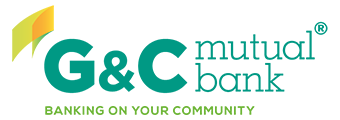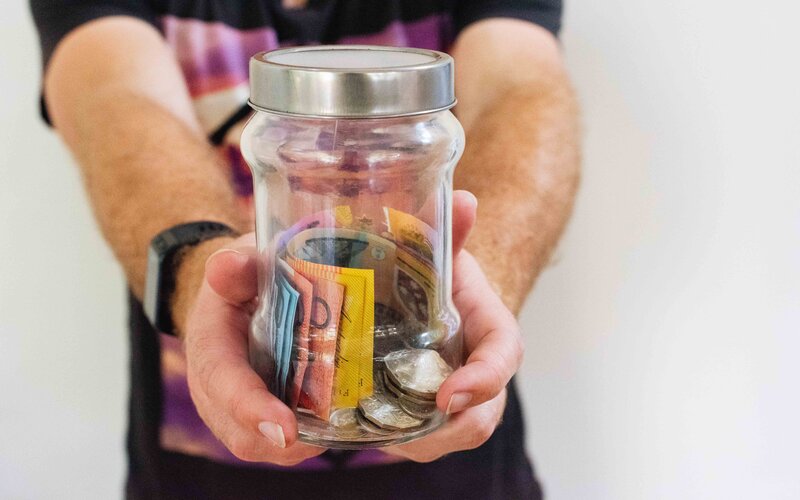Term deposits can be a great investment tool for the more risk-averse investor. Where investing in assets like property and shares can bring big losses as well as big gains, term deposits are generally much more stable, giving you guaranteed, albeit smaller, returns.
They are also backed by the Federal Government's $250,000 ADI Deposit Scheme Guarantee.
Since the Reserve Bank's first cash rate increase in more than 10 years happened in May 2022, term deposit rates have been moving upwards. Some rates on lengthier terms have breached the 4% p.a. barrier for the first time in who-knows-when.
This has prompted many savers to reconsider the humble term deposit, however what if you need to get out of it early?
Below are some of the highest rates for 6-month term deposits on the market.
How term deposits work
Term deposits are a very simple product: you deposit a lump sum of money into a financial institution in exchange for a fixed rate of return over a specified period.
For example, you might put $10,000 in a term deposit. For a one-year term deposit paying 2.60% p.a, you’d receive $260 in interest, plus your $10,000 back, bringing that amount to $10,260. Simple. For longer-term deposits, you might choose to be paid the interest on an annual basis rather than in a lump sum at the end.
Some banks offer a more competitive interest rate if you choose to have your interest paid at the end of the term, rather than monthly or annually.
You can choose from a wide variety of terms with a term deposit, from one month to as long as five years. Generally, the longer the term, the higher the rate the provider will offer you – as this graph demonstrates:
Current interest rates on term deposits
Interest rates on term deposits used to be quite high. Back in 1989, some term deposit rates were as high as 16.00% p.a., but now these days you’d be lucky to find one that’s offering much over 3.00% p.a.
A key question you need to ask yourself is: can I afford to keep the money locked away for the duration of the term? If the answer to this is no, then you could face penalties.
Early exit fees on term deposits
Banks don’t want customers withdrawing from their term deposits early because they rely on these deposits for funding their other business operations. The more deposits a bank has, the more they can lend to customers through things like home loans, car loans and credit cards.
Plus, 2015 reforms require banks to hold enough assets to see off at least 30 days of financial turmoil. So withdrawing from a term deposit early can be detrimental to a bank’s operations, and as a result, they may choose to penalise you.
Generally, there are two types of penalties that are applied to early withdrawals:
- Interest rate reductions
- Break costs
Also, most authorised deposit-taking institutions (ADIs) cannot release term deposit funds until after a notice period has passed, usually 31 days. So in addition to break costs and interest reductions, you may have to wait a month to receive your funds.
Penalty interest rate
This again will vary between providers, just as the terms and interest rates on term deposits do. Some banks might not charge break costs, but most do apply interest rate reductions.
The way interest reduction works is relatively straightforward: your final interest payment is reduced based on how much of your term has expired. This is to stop people taking out a high-interest term deposit and withdrawing straight away.
Interest rate reduction policies among banks are typically as follows:
| Percentage of the term elapsed | Interest rate reduction |
|---|---|
| 0% to 20% | 90% |
| 20% to 40% | 80% |
| 40% to 60% | 60% |
| 60% to 80% | 40% |
| 80% to 100% | 20% |
So if you had a 3.00% p.a. interest rate on a three-year term deposit but asked to withdraw in the first couple of months for financial reasons, that interest rate would be reduced to a mere 0.30% p.a, which is barely anything. The further into the term you are, the less your interest will be reduced by. For longer term deposits that have interest paid in instalments, you may even have to repay some interest, as these calculations are based on a lump sum payment.
In addition to an interest reduction, it’s not uncommon for certain providers to also charge a break fee, also called an early termination fee or just a termination fee. This fee is often around $30, which isn’t much, but for smaller deposits of under $10,000 – this fee eat up a large chunk of your annual returns.
Case studyLois Price decides to put $15,000 of her hard-earned savings into a term deposit for the next two years – she’s planning a big holiday then and wants some guaranteed interest to help with her expenses.
The term deposit she chooses has an interest rate of 3.00% p.a. and pays interest at maturity. So as things stand, Lois is set to earn $914 in interest when her term deposit reaches maturity.
But one year into the term, disaster strikes! She totalled her car and had to buy a new one (she didn’t have insurance). So, she needs to access that $15,000.
After speaking with her bank, they tell her there’s a break fee of $30, and given that between 40% and 60% of the term has elapsed, her interest rate is reduced by 60% to 1.20% p.a.
Her final interest payment is now $362, which is $332 minus the break cost. That’s nearly a third of what it could have been had she lasted the whole term.
Plus, she has to wait a minimum of 31 business days to receive the money, which delayed her car purchase.
|
The best way to find out what your potential withdrawal fees are is to read your term deposit’s PDS or product disclosure statement to see for yourself.
When term deposits don’t charge an early withdrawal fee
In most situations you’ll be faced with early withdrawal penalties on your term deposit, but not always. There are a few situations you could find yourself in that allow you to break the term for free.
1. Cooling off periods
Term deposits can have something called ‘automatic rollover‘ where your term deposit will start again once maturity has been reached unless you give them instructions otherwise. These rollovers can often have lower interest rates, and if you were to forget about your term deposit, you’d be stuck in it again until the new term ends.
Many institutions include automatic rollovers in their term deposits. By law, institutions are required to contact you when your term deposit is due to rollover into another one. If you fail to respond to the institution, your term deposit may rollover automatically
If your term deposit rolls over before you had a chance to stop it, there’s something called a ‘cooling off’ period where you can cancel and withdraw from the new term without incurring any penalties. This cooling off period is usually about seven days.
2. Partial withdrawal term deposits
Certain term deposits may allow you to make partial withdrawals from your term deposit early without incurring any fees or reductions in interest, as long as the balance doesn’t go below a certain amount. You will still need to follow that institution’s normal notice period.
3. Financial hardship
In Australia, financial hardship is defined as:
When someone is willing but unable to meet their debt obligations due to unforseen changes and circumstances, such as changes in income & employment status, injury or illness, significant life events and emergencies as well as natural disasters
Someone in hardship is also someone who can reasonably be expected to recover their financial position if special arrangements were made. Financialerights.org.au has a sample hardship letter you can send to your provider in the event that you are suffering from hardship and would like to access your term deposit funds – most institutions have a hardship team who takes these requests seriously.
By applying for financial hardship with your bank, you may be able to withdraw your funds without penalty but may still have to wait out the 31-day waiting period.
What to do if you need to access your money
For starters, try not to withdraw early unless it’s absolutely necessary – you’re potentially missing out on substantial interest earnings, not to mention the agony of jumping through hoops and waiting the minimum amount of days specified by the provider. Ideally, you’d want to withdraw funds from other sources first, such as your trusty savings account.
But if you do need to make a withdrawal, then you will first need to contact your bank to let them know of your intentions. Cancelling a term deposit isn’t always as easy as simply hitting a button online. You might have to call them or physically visit a branch and speak to a customer care specialist. There should be details on how your specific provider handles early terminations, but you should make an effort to find out before you take out a term deposit.
Remember this: there is no legal requirement for your provider to break your term deposit early. Although most should approve your request, there’s always a chance that they won’t. You need their approval before your funds can be withdrawn.
Before jumping into a term deposit, conduct a thorough review of your chosen term deposit’s terms and conditions before finalising your application, paying close attention to:
- The interest rate reductions that apply
- The break fees
- Whether automatic rollovers apply, and what notice period they give you
- What notice period you’ll be required to give if you decide to withdraw early
- The bank’s preferred method of contact (Phone? Email? Carrier pigeon?)
But you should really try to avoid having to withdraw before maturity, as it’s an unnecessary complication. Only deposit money you can afford to go without and try to have a stash of emergency savings in a savings account.
A savings account with a rate lock: A solution?
Savings accounts with a rate-locking feature used to be a popular product but fell away in this low-interest environment. Recently, however, they have started to make a comeback.
Virgin Money has a savings account lock feature, which gives a bonus interest rate if the customer is willing to lock away all or a portion of their funds. The minimum term is 32 days.
Article first published by William Jolly on 22 January 2019, last updated 10 May 2022.








 Denise Raward
Denise Raward


 William Jolly
William Jolly
 Harry O'Sullivan
Harry O'Sullivan

